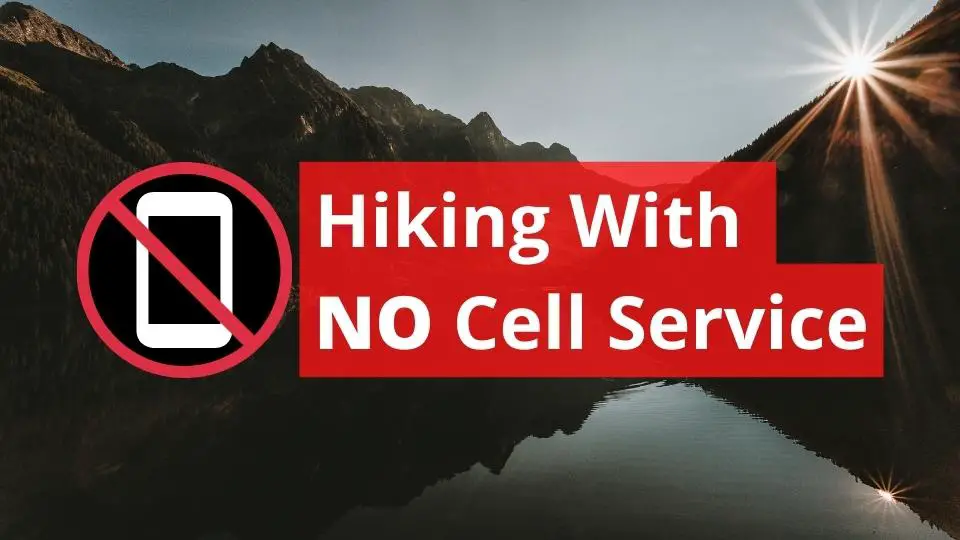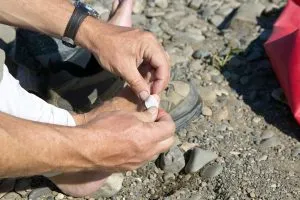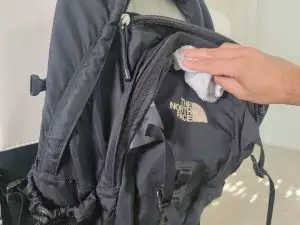Hiking With No Cell Service: How-To Guide

Have you ever hiked in the mountains and realized that your cell signal is, for a lack of a better term, crap?
Modern technology in our cell phones offers us a superabundance of help and resources, but even the best advances in modern technology have their limits.
There are plenty of people who take advantage of smartphones even while in nature, whether it’s to get a good picture of the views or to help them traverse the terrain. If you’re one of those hikers who is planning to use your cell phone, whether to make a call or for GPS function, you may want to consider refining your choice of trails to make sure you have the clearest signal possible.
Quick Links
Why Your Cell Service Goes Out on your Hike
When you find yourself lacking cell service bars out on the trail, there are several reasons why your phone’s signal may be performing weaker than usual. Here are a few of the main culprits:
Areas with Mountains, Hills, or Valleys
Certain geographic landscapes can contribute to why you might lose cellular service on your hike. If you’re in a mountainous area, for example, the thick rock and mineral can effectively block out signals from local cell phone towers. To avoid your cell service from going out on your hike, stick to trails with less variety in elevation.
Too Far From the Cell Tower
The farther you get away from a cell tower, the weaker it gets. Even the most advanced 5G LTE technology comes with its limits. You’re likely not to find yourself too close to a cell tower high in the mountains or in the backtrails of a national park, so if cell service is of utmost importance to you on a trail, look for something more local.
Bad weather
Inclement weather can greatly affect your cell phone’s ability to pick up a signal. Combine that with a trail that goes through hills and valleys, and you got yourself a dead zone. Our cell phones transmit and receive electromagnetic signals, and when the weather calls for humidity, cloudy skies, rain, or snow, your phone’s signal can be greatly compromised. Before you go on your hike, check weather conditions to see if they’re going to be cell signal friendly.
Heavy Foliage
One of the main reasons that anybody would go for a hike would be to observe the beautiful greenery nature has to offer, but did you know that trees can actually block out your cell signal? If you ever find yourself surrounded by a lush grove of trees and wonder why your calls keep dropping, now you know to try to get yourself to more open skies to avoid that dreaded fish tank voice.
Preparation for a Trail with No Service
Maybe you feel as though not having cell service couldn’t keep you away from the trails if it tried. This is a great attitude to have! But just in case, you should still prepare yourself sufficiently to go on your outdoor adventure without a reliable means of communication.
Bring a Compass and a Map
If you’re going to traverse a trail that you know is going to have shotty service, bringing a good old-fashioned map and compass could very well save your life. Prior to your hike, familiarize yourself with how to read a map, and how to use it in tandem with a compass to maneuver your trail.
Invest in a Hiking GPS
There are GPS systems that are specifically designed for hikers who like to go further than the local hiking trails. Ruggedly built and weatherproof, a hiking GPS is an excellent and even preferable stand-in for your phone’s GPS that may rely on an unreliable signal. You can get hiking GPS in the form of a handheld device or in the form of a bracelet or watch to wear.
Use your Cell Phone GPS
Even though you may come across areas on your trail with dead cell service, you may still be able to use your cell phone’s GPS function. To make sure you have the clearest signal possible, make sure that you are beneath a clear, unobstructed view of the sky to get the clearest signal possible.
How to Improve Cell Signals on the Trails
Even though losing your cell phone service out on the trail may be ultimately out of your control, there are still some initiatives you can take to keep your signal strong while out on a hike.
Check to see if you’re trail has signal boosters ahead of time
Some hiking trails are aware of their own shortcomings when it comes to their ability to provide quality cell signals. This is why some trails have built-in signal boosters into the landscape to ensure that you have the clearest signal you can get outdoors. Prior to your hike, do some research on the trail you plan to trek to see if any signal boosters are included in the landscape.
Use your own signal booster
If you know that the trail you are trekking on doesn’t have signal boosters readily available, there’s no need to fret. You can buy your own signal boosters and have a better signal even in the hilliest of areas. Most quality signal boosters will run you about three figures, so invest wisely when looking to purchase one.
Conclusion
Hiking with a weak cell service signal can be a bit of a nuisance, especially if you’re using your phone’s GPS system to traverse the trails. Thankfully, there’s plenty you can do to combat the potential weakening of your cell service.
If you’re looking to hike in an area where you know service will be weak, a compass, map, hiking GPS, and a signal booster will be your best friend to make sure your cell signal is strong and clear all throughout your trail.







